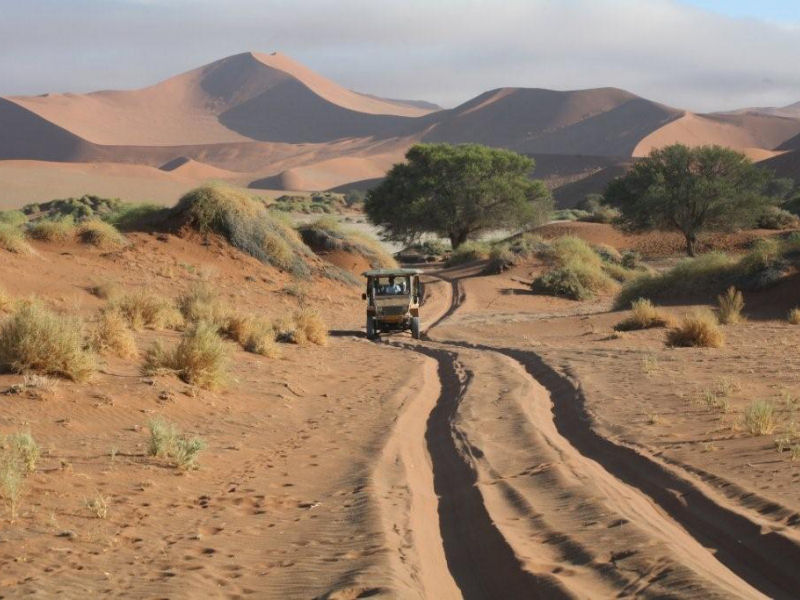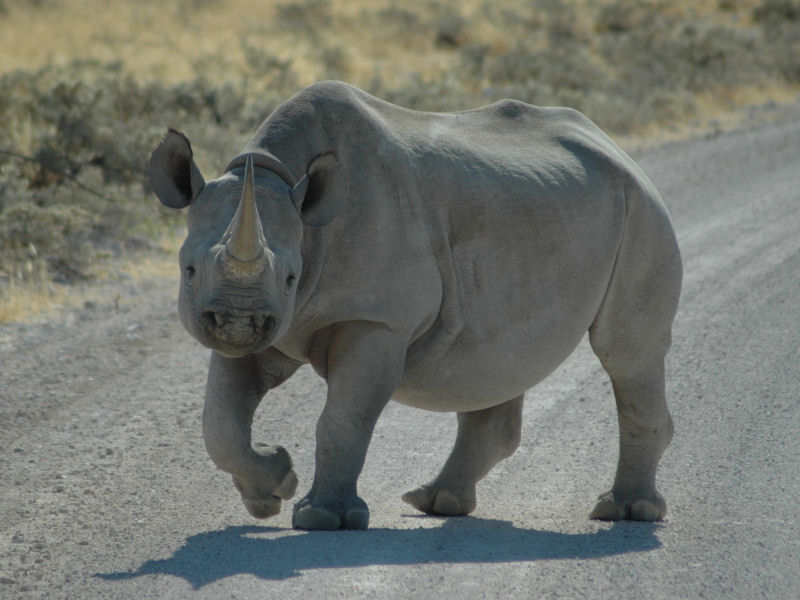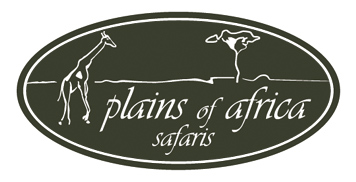Discover Namibia
Namibia is situated along the south western coast of the African continent lies a land of remarkable contrast. It is one of the most sparsely populated countries in Africa and the most an arid country south of the Sahara. The countries landscapes are an ever-changing kaleidoscope – changing from the Namib dune Sea to teak woodlands and waterways in the north east. Namibia’s people are diverse from the pastoral Himba tribes in the north west to the San Bushmen in the east. The majority of the population groups Are Owambo, which consists of eight cultural groups. Safari highlights: Kaokoland, vast sandy plains, horizons and mountain and home to the Ovahimba tribe – Namibia last nomads – as well as the legendary desert elephant. Damaraland, unique and contrasting landscape, has a variety of free-ranging game importantly the desert rhino. Etosha National Park, one of the largest game reserves in Africa with all the big five. North eastern Namibia is a water wilderness of tropical Africa. Skeleton Coast, with its bones of ancient ship wrecks, unique wildlife, seal colonies, clay castles and saltpans, make this one of the best photographic destinations in Africa. The Namib Desert is the oldest desert in the world and the central part is famous for its dunes that constantly shift. Namibia is a country of clear blue skies and pleasant climate and can visited at any time of the year.

When To Go? Climate
Namibia is a country of clear blue skies and pleasant climate and can visited at any time of the year.
What to do?
- Desert Journey’s – Specialised Mobile Camping Safaris exploring remote desert regions of Namibia. Tracking the desert rhino, elephant and lion.
- Boat Safaris – cruise along the banks of the Rivers and Atlantic past prolific bird life, and viewing the game both marine and terrestrial.
- Game Drives – These are operated in open vehicles, usually at dawn and dusk to seek out the most interesting wildlife.
- Night drives are also arranged in certain areas enabling visitors to glimpse the nocturnal world.
- Walking Safaris – there is no better way of getting really close to nature than this. Lead by experienced armed guides/rangers/trackers, walkers are bale to enjoy the sights, smells and sounds of the bush in harmony with their surroundings. On some treks you may be exploring areas untouched.
- Culture – a wide diversity of tribal peoples with their interesting traditions and ceremonies reflect their heritage. Include The, San, Nama, Koekhoe nomads, The Damara, Ovambos, Hereos, Kwangali, Mbukushu, Subiya and Bantu’s
- Ancient rock engravings, and art ? a painting done on rock fragments found in Apollo 11 cave were done at least 14 000 years before the first pyrimid was built in Egypt.

What to do?
- Desert Journey’s – Specialised Mobile Camping Safaris exploring remote desert regions of Namibia. Tracking the desert rhino, elephant and lion.
- Boat Safaris – cruise along the banks of the Rivers and Atlantic past prolific bird life, and viewing the game both marine and terrestrial.
- Game Drives – These are operated in open vehicles, usually at dawn and dusk to seek out the most interesting wildlife.
- Night drives are also arranged in certain areas enabling visitors to glimpse the nocturnal world.
- Walking Safaris – there is no better way of getting really close to nature than this. Lead by experienced armed guides/rangers/trackers, walkers are bale to enjoy the sights, smells and sounds of the bush in harmony with their surroundings. On some treks you may be exploring areas untouched.
- Culture – a wide diversity of tribal peoples with their interesting traditions and ceremonies reflect their heritage. Include The, San, Nama, Koekhoe nomads, The Damara, Ovambos, Hereos, Kwangali, Mbukushu, Subiya and Bantu’s
- Ancient rock engravings, and art ? a painting done on rock fragments found in Apollo 11 cave were done at least 14 000 years before the first pyrimid was built in Egypt.

Where to go?
- Kaokoland, vast sandy plains, horizons and mountain and home to the Ovahimba tribe – Namibia last nomads – as well as the legendary desert elephant.
- Damaraland, unique and contrasting landscape, has a variety of free-ranging game importantly the desert rhino.
- Etosha National Park, one of the largest game reserves in Africa with all the big five. Northeastern Namibia is a water wilderness of tropical Africa.
- Skeleton Coast, with its bones of ancient ship wrecks, unique wildlife, seal colonies, clay castles and saltpans, make this one of the best photographic destinations in Africa.
- The Namib Desert is the oldest desert in the world and the central part is famous for its dunes that constantly shift.
- Fish River Canyon – 60km long, 8km wide and 550 km deep is the second largest in the world.
- Kalahari Wetlands – rivers that never run dry sustain tropical forest and woodlands in the Caprivi Strip.
- Soussusvlei – Monumental piles of sand , red dunes that reach 70 storey’s in height in the Great inland Sand Sea. An isolated pan of white clay in their midst, the end point of an ephemeral river fills with flood waters on rare occasions.

Birding Hotspots!
There are approx. 660 species. Namibia has 16 endemic species
Hotspots to find them are: Hobatere private nature reserve, on the Western border of Etosha between the northern and southern Kaokoveld. Kalahari wetlands along perennial rivers and floodplains in the Caprivi strip. Sandwhich harbour and Walvis Bay is recognised under the Ramsar Convention as a wetland of international importance.
